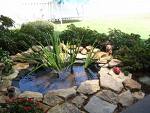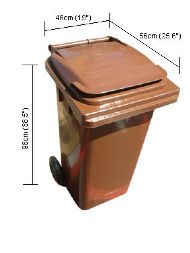The Green At Green
Eco-renovation and new build for a greener home
Reduce energy and CO2 emissions
- Replace old boilers with a condensing boiler. The SEDBUK rating of all boilers can be found on www.boilers.org.uk
- Upgrade controls for the boiler and hot water cylinder, and fit thermostatic radiator valves on radiators
- Insulate hot water cylinder and pipework, especially the primary pipework between the boiler and hot water cylinder
- Install reflective foil behind radiators that are on outside walls
- Draught proof doors, windows and unsealed openings such as chimneys. Ensure controlled ventilation is introduced to prevent condensation problems
- Upgrade loft insulation. 200mm of insulation is recommended (eg recycled cellulose, sheep’s wool, mineral fibre). Insulate and draught proof suspended wooden floors. Ensure floor void is well ventilated
- Insulate external walls where possible. Grants may be available for cavity wall insulation. Check with your local council
- Fit timber framed double glazed windows with low E glass, or install secondary glazing
- Install low energy light bulbs
- Buy A rated appliances eg washing machines, fridge freezers etc
- Sign up to a “green” electricity supplier to stimulate the growth of renewables in the UK electricity generating industry. This is for the electricity for your lights and appliances only. It does not offset the emissions from electric space heaters.
- Consider installing a solar water heating system, photovoltaics and/or a wind turbine. Grants are available from central Government for the installation of renewable energy systems (Clearskies T: 0870 2430930 and www.clear-skies.org ). However, do not do this at the expense of basic energy efficiency measures.
- Conserve water and reduce storm water run off
- Fit water efficient WCs in place of existing WCs.
- Retrofit water saving devices into existing WC cisterns (available from your local water supplier).
- Fit aerated heads on basin taps and shower heads.
- If you have a combination boiler fit flow regulators on basin taps and showers (as long as your shower is not heated by electricity, where restricting the flow can cause scalding)
- Collect as much rainwater as possible for use in the garden and construct a garden that requires minimum water with drought resistant species and plenty of organic mulches. This reduces your water demand and also reduces the strain on surface water drains during storms.
Reduce pollution and resource depletion in the external environment
- Choose only zero ozone depleting materials (Zero ODP).
- Minimise the use of chemicals or products that use a lot of chemicals in production
- Choose materials that are natural and from a renewable resource.
- Use materials that have a low embodied energy and are not polluting in their manufacture, use or disposal.
- Use second hand materials where possible.
- Use locally grown or FSC accredited timber for all timber work.
- Use durable timber species externally to reduce the amount of preservatives that are needed, e.g. English oak, sweet chestnut and European larch.
- Use materials or products that are reclaimed or recycled.
- Choose durable products that have a long life span and are low maintenance.
- Avoid PVC where possible.
- Source materials from manufacturers with a proven environmental management record who can readily supply environmental and health data.
- Reduce pollution in the internal environment
- Use hard flooring and avoid carpets / coverings that will harbour dust mites, chemicals etc.
- Use linoleum instead of vinyl flooring.
- Use low emission (natural) paints and finishes.
- There is generally no need to treat internal timbers if basic good design principles are followed. Establish the cause of insect or rot attack and rectify using environmental controls where possible (adjust temperature, ventilation etc to make atmosphere undesirable to fungi and pests).
- Avoid chemical dpcs. Most damp problems can be solved by repairing defects in the building structure , e.g. clearing gutters and drains, unblocking air bricks, repointing etc
- Consider reducing the effect of electromagnetic fields when re-wiring.
Promoting biodiversity in your garden
- Retain existing trees and hedgerows wherever you can, ensuring these are protected adequately during the building works.
- Create wild areas using native trees, shrubs and wildflowers.
- Encourage wildlife by installing bird / bat boxes.
- Build dry stone walls.
- Put in a pond to attract wildlife and create a habitat.
 Garden Pond Garden PondA Garden Pond |  Wheelie bins Wheelie binsFood Waste and Household Waste | | | | |
|  GreenWorld | sitemap | log in
GreenWorld | sitemap | log in






